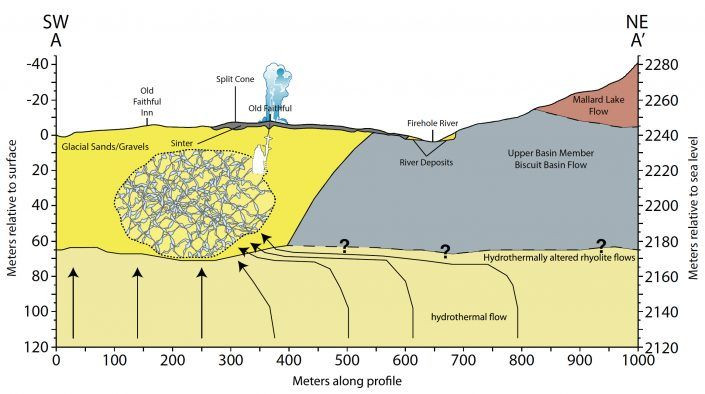Old Faithful's Plumbing Revealed For the First Time: Seismograph Shows Geyser's Interior

Yellowstone National Park sees millions of visitors every year. Old Faithful is one of the major attractions here. This geyser erupts every 44 to 125 minutes making for a spectacular viewing of seismic activity on the Earth's crust. But the famous geyser’s internal structure, passageways and workings have remained a mystery up until now.
A group of scientists from the University of Utah has mapped the ‘near-surface geology’ around Old Faithful. This scan of the geyser and the ground around it revealed a reservoir of heated water feeding the surface vent of the geyser. The eruptions themselves were found to be a result of the ground shaking.
The map shows a very intricate network of pathways under the geyser. Using very accurate and sensitive seismograph equipment and techniques, the team formed a complete picture of what lies beneath. The results published in Geophysical Research Letters was headed by Doctoral student Sin-Mei Wu who was the lead author of the paper.

Geysers are faults in the hydrothermal system of Earth’s crust. In the Yellowstone National Park, Old Faithful is a prime attraction but its plumbing was never really explored. The reservoir of water lays over two huge magma reservoirs. These reservoirs are at a distance of 3.1 to 24.8 miles under the surface. In some places within Yellowstone, the hot water manifests itself in pools and springs. In others, it takes the form of explosive geysers, a release by the University of Utah.
Even though past seismic activity can be examined to form a rough image of what the interior looks like, a comprehensive image was necessary. For this, the team had to measure continuous ground shaking in the area made by human vehicles, wind and water. These processes are continuous which helps us see the image for longer periods and makes the intricacies of the underground environment, clearer.
The University of Utah used data from the 30 permanent seismometers they placed around the park to monitor seismic activity and even minute tremors. Volcanic events were also recorded to provide the most comprehensive study of this region, till now.
After an eruption, the team noticed that the geyser’s reservoir fills again with hot water. According to study co-author Jamie Farrell, “as that cavity fills up, you have a lot of hot pressurized bubbles. When they come up, they cool off really rapidly and they collapse and implode.” The energy released by those internal implosions causes heavy tremors, causing an eruption, he added.
Wu stated in the report that the reservoir is tied up to a network of cracks and fractures through which water flows. The reservoir has a diameter of around 200 meters. The capacity of the reservoir is about 300,000 cubic meters of water, or more than 79 million gallons. By comparison, each eruption of Old Faithful releases around 30 cubic meters of water, or nearly 8,000 gallons. “Although it’s a rough estimation, we were surprised that it was so large,” Wu said.
Farrell says the team will not rest after the mapping is over. They plan on using this pricey and state-of-the-art seismic equipment to produce several high-quality images of the subsurface region around the geyser. The regular seismic waves recorded will add on to the existing data, giving a more comprehensive understanding every time.
© Copyright IBTimes 2024. All rights reserved.





















